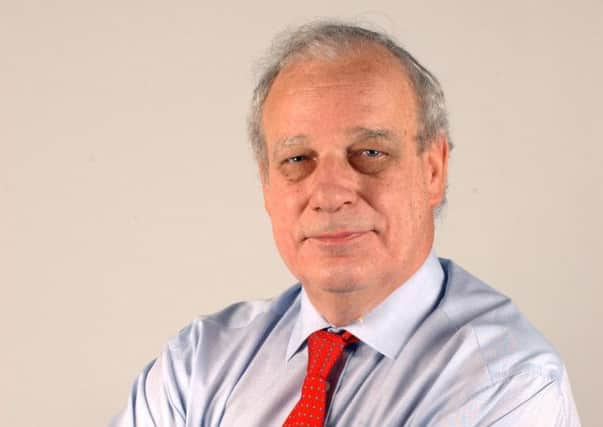Comment: Back where we started with British Assets


This £500 million trust, established in 1898, may not have shot out the lights in terms of capital performance: it has trailed the global equity income sector over periods of three and five years. But it has been a popular choice for investors seeking income. Shares in the trust, currently standing at 137p, are yielding 4.6 per cent.
A yield of this sort has recently driven investment trust income shares to a premium over the value of their net assets. But British Assets can still be bought at a 5.9 per cent discount.
Advertisement
Hide AdAdvertisement
Hide AdA notably higher-than-average dividend yield and the shares at a discount: that’s an unusual combination. And it reflects market doubts, both about capital performance and the sustainability of that dividend over the medium to long term.
The trust was conservatively managed from Edinburgh by Julie Dent between 2001 and 2011, a turbulent period by any standards. The trust retained a reputation for stability and against that backcloth this was no mean achievement.
In 2011, Phil Doel took over as manager with an ambition to run a more global portfolio of shares and to achieve a stronger capital performance by being more focused – at that point it had 200 holdings. The trust literature says that it “aims to achieve a total return in excess of its benchmark by investing principally in a diversified international portfolio of equities and equity related securities”. While still maintaining a “progressive” dividend policy: an ambiguous word if ever there was one.
But the preference for investors remained doggedly for income – a preference reinforced by the trust’s policy of paying out dividends four times a year. However, this emphasis on income made it more difficult for the managers to turn British Assets into a truly global trust. The result has been a portfolio still overwhelmingly invested in leading UK shares – as the trust’s name surely suggests – rather than a diversified international portfolio that would befit inclusion in the global equity income sector.
So what is British Assets at heart? A global trust or a UK one? A growth trust or an income one? A focused portfolio or a diversified one? Professional advisers were never too sure. But most investors had little doubt: they bought in for the income.
Now big change is afoot. The trust’s board has announced changes to the investment objective – which are subject to shareholder approval – and a change of fund manager, moving the management contract of the fund from Foreign & Colonial to BlackRock.
The new policy will be to follow “a dynamic multi-asset” approach. Blackrock intends to invest around 40 per cent of the portfolio in UK equity income stocks and 60 per cent “on a tactical asset allocation basis… proposed strategy for the company, to reposition it as a multi-asset portfolio (retaining the target of annual dividend growth whilst focusing on capital stability), represents an innovative way to capitalise on the very attractive opportunities presented by recent legislative changes relating to UK pensions, and, by harnessing the considerable investment track record and marketing power of the world’s largest fund manager, is well designed to address the issue of relevance and relative attractiveness in the post-RDR investment world”.
Phew! I am grateful to James Carthew at Citywire for interpretation: He sees it as an attempt to tap into the £9 billion retirement market created by recent pension freedom reforms.
Advertisement
Hide AdAdvertisement
Hide AdWhat is it, he asks, that a pensioner wants? “Sufficient income to live on in retirement a chance of that income keeping pace with inflation; ideally a nest egg to pass on to future generations; and peace of mind.”
The plan to attract this market is to invest in a range of different assets with the aim of generating fairly smooth returns equal to about inflation (CPI) plus 4 per cent a year. The “tactical asset allocation basis” will be undertaken by Adam Ryan, who runs BlackRock’s Diversified Strategies team. It aims to generate consistent absolute returns, controlling the volatility of the portfolio by combining different asset types that are not all correlated with each other.
That all sounds very high-falutin’ but essentially it appears to be offering an attractive proposition which financial advisers can recommend to pension-minded clients. Here, they can say, is an equity income-orientated trust with a greater prospect of consistency in dividend payments. But er, isn’t this where we came in?
SUBSCRIBE TO THE SCOTSMAN’S BUSINESS BRIEFING